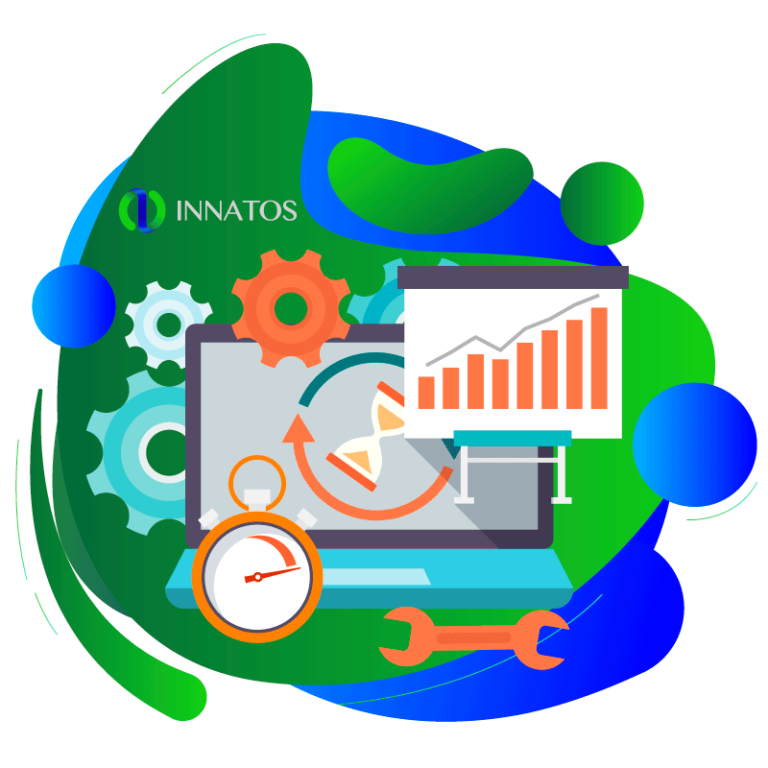Mastering ERP Integration for Business Efficiency
I’ve been on a journey to unlock the full potential of my business and, let me tell you, mastering ERP integration has been a game-changer. It’s all about how efficiently you can get different aspects of your business to work together seamlessly, from inventory to customer relations. This article will walk you through the essentials of enhancing your business efficiency by getting your ERP system to play well with the rest of your tech stack. It’s been quite the ride, learning how to leverage these systems to not just keep up, but truly excel in the ever-evolving business landscape. Stick around, and I’ll share the insights that have made all the difference for me.
Understanding ERP Integration
When we talk about making our businesses run smoother, one term that often pops up is ERP integration. But what does that really mean? Let’s dive into it.
Definition of ERP Integration
ERP integration, in simple terms, is the process of connecting and synchronizing an ERP (Enterprise Resource Planning) system with other applications or software systems within a business. This could mean linking your ERP with your CRM (Customer Relationship Management) software, e-commerce platform, or any other business-critical system. It’s like making sure all members of a relay team know when to start running and when to pass the baton so that the race can be as smooth as possible.
The Importance of ERP Integration in Modern Business
In the fast-paced world we live in, having interconnected systems is no longer a luxury—it’s a necessity. ERP integration plays a crucial role in streamlining operations, reducing manual work, and ensuring that information moves seamlessly across different parts of a business. This interconnectedness can be the difference between a business that struggles to keep up and one that operates like a well-oiled machine.
Types of ERP Integration
There are several types of ERP integration, ranging from simple data integration, which focuses on ensuring consistent data across systems, to process integration, which looks at optimizing business processes by connecting different functions and activities. Then there’s full-scale application integration, a more complex endeavor that involves creating a completely interconnected IT ecosystem. Each type serves different needs and comes with its own set of challenges and benefits.
Key Benefits of ERP Integration
Integrating your ERP system with other business applications comes with a plethora of benefits that can significantly impact your company’s bottom line.
Enhanced Efficiency and Productivity
By automating data transfer between systems, ERP integration eliminates redundant manual data entry and reduces the chances of errors. It’s like having an invisible assistant who ensures that everything in your business communicates smoothly, freeing up your human employees to focus on more strategic tasks.
Improved Data Accuracy and Consistency
With ERP integration, data is synchronized across systems, ensuring that everyone has access to the same, up-to-date information. It’s akin to making sure everyone in a relay race is running on the same track; it keeps everyone aligned and moving in the right direction.
Streamlined Business Processes
Integrating your ERP with other systems can help streamline operations, from order processing and inventory management to customer service. It allows different parts of a business to work together more effectively, like a team of paddlers in a canoe, moving in unison to glide effortlessly through the water.
Better Decision-Making Through Real-time Data
ERP integration provides businesses with access to real-time data, enabling more informed and timely decision-making. It’s like having a bird’s-eye view of a maze, allowing you to navigate more efficiently and avoid potential obstacles.

This image is property of images.pexels.com.
Pre-Integration Considerations
Before jumping into ERP integration, there are a few important considerations to keep in mind.
Assessing Business Needs and Goals
It’s essential to have a clear understanding of what you want to achieve with ERP integration. Identifying specific business needs and goals will guide the selection of which systems to integrate and prioritize.
Choosing the Right ERP System
Not all ERP systems are created equal. Choosing the right ERP system that fits your business needs, can scale with your growth, and is compatible with your existing systems is crucial.
Evaluating Current IT Infrastructure
Taking stock of your current IT infrastructure will help identify potential hurdles in the integration process, such as outdated systems that might need upgrading.
Identifying Integration Challenges
Every business will face its own set of integration challenges, from data compatibility issues to changes in business processes. Identifying these challenges early can help in planning how to address them.
Strategies for Successful ERP Integration
Successfully integrating your ERP system with other business applications requires careful planning and execution.
Adopting a Phased Approach
Taking a phased approach to ERP integration—starting small, proving success, and then scaling—can reduce risks and help manage complexity.
Ensuring Data Quality and Consistency
Ensuring that the data being shared between systems is accurate, clean, and consistent is fundamental to effective integration.
Leveraging ERP Integration Tools and Platforms
There are a variety of tools and platforms designed to facilitate ERP integration, from iPaaS (Integration Platform as a Service) solutions to custom-developed APIs. Utilizing these tools can simplify the integration process.
Prioritizing Security in Integration Processes
With data moving between different systems, securing data transfers and access is paramount. It involves implementing robust security measures throughout the integration process.

This image is property of images.pexels.com.
Overcoming Common ERP Integration Challenges
Integration projects can be fraught with challenges, but with the right strategies, these can be overcome.
Managing Change Resistance
Change can be hard, and introducing new integrated systems is no exception. Effective change management strategies are critical to ensuring buy-in from all stakeholders.
Dealing with Data Migration Issues
Migrating data between systems can be a complex process, with risks of data loss or corruption. Careful planning and execution are needed to ensure data is transferred accurately and securely.
Addressing Customization Needs
Every business has unique needs, and off-the-shelf integration solutions may not always meet these requirements. Customization can be necessary but requires careful consideration to avoid excessive complexity.
Ensuring System Scalability and Flexibility
Business needs evolve, and integrated systems need to be scalable and flexible enough to accommodate future changes. This ensures the long-term sustainability of the ERP integration effort.
Tools and Technologies for ERP Integration
There are several tools and technologies available to help businesses achieve successful ERP integration.
Overview of ERP Integration Tools
From middleware that facilitates data exchange between systems to specialized ERP integration platforms, there is a wide range of tools designed to make integration easier and more efficient.
APIs and Middleware for Seamless Integration
APIs (Application Programming Interfaces) and middleware play a crucial role in enabling different applications to communicate with each other, acting as translators that allow data to flow seamlessly between systems.
Cloud-based vs. On-premises Solutions
When it comes to ERP integration, there are both cloud-based and on-premises options, each with its own advantages. Cloud-based solutions offer scalability and flexibility, while on-premises solutions may provide greater control over security.
Important Features to Look for in Integration Tools
When selecting integration tools, important features to look for include ease of use, the ability to support real-time data exchange, robust security features, and support for customizations.

This image is property of images.pexels.com.
The Role of Data Management in ERP Integration
Effective data management is a cornerstone of successful ERP integration, ensuring that data is accurate, consistent, and accessible.
Implementing Effective Data Governance
Data governance policies and practices help ensure that data across integrated systems is managed in a consistent, secure, and efficient manner.
Data Mapping and Transformation Techniques
Data mapping and transformation techniques are used to ensure that data from different systems is compatible and can be integrated smoothly, like translating between languages to ensure clear communication.
Achieving Data Synchronization Across Systems
Data synchronization ensures that data remains consistent across integrated systems, providing a single source of truth that enhances decision-making and operational efficiency.
Monitoring and Maintaining Data Quality
Regular monitoring and maintenance are essential to ensure that data quality is preserved throughout the integration process and beyond.
Measuring the Success of ERP Integration
Evaluating the success of ERP integration efforts is critical to understanding their impact and identifying areas for improvement.
Identifying Key Performance Indicators (KPIs)
Key performance indicators (KPIs) help measure the success of ERP integration, from improved efficiency and productivity to enhanced decision-making and customer satisfaction.
Regularly Auditing System Performance and Data Accuracy
Regular audits of system performance and data accuracy can help identify issues early, ensuring that integrated systems continue to meet business needs effectively.
Gathering Feedback from Users
Feedback from users is invaluable for understanding how well integrated systems are supporting their needs and identifying areas for refinement.
Continuous Improvement Strategies
ERP integration is not a one-time effort; it requires continuous improvement to adapt to changing business needs and technology landscapes. Employing strategies for ongoing refinement and optimization is key.
Case Studies of Successful ERP Integration
Looking at real-world examples provides valuable insights into the benefits and challenges of ERP integration.
Industry-Specific Implementation Insights
Case studies from specific industries can offer deep insights into the unique challenges and solutions related to ERP integration in those contexts.
Overcoming Integration Barriers: Real-world Examples
Real-world examples of businesses overcoming common ERP integration challenges can provide practical strategies that others can apply.
Leveraging ERP Integration for Competitive Advantage
Case studies that demonstrate how businesses have used ERP integration to gain a competitive edge can inspire and guide others on their integration journey.
Lessons Learned and Best Practices
Learning from the experiences of others can help businesses avoid common pitfalls and employ best practices in their own ERP integration efforts.
Conclusion
Recap of ERP Integration Benefits and Strategies
To sum up, ERP integration offers significant benefits, from enhanced efficiency and data accuracy to better decision-making and streamlined processes. Employing the right strategies and considering key pre-integration factors can help ensure success.
The Continuous Journey of ERP Integration
ERP integration is an ongoing journey that evolves with your business and the technological landscape. Staying committed to continuous improvement and adaptation is crucial.
Staying Ahead in a Rapidly Evolving Technological Landscape
In our rapidly changing world, staying ahead means being flexible, informed, and ready to embrace new technologies and integration opportunities as they arise. With the right approach to ERP integration, businesses can not only keep up but thrive.






